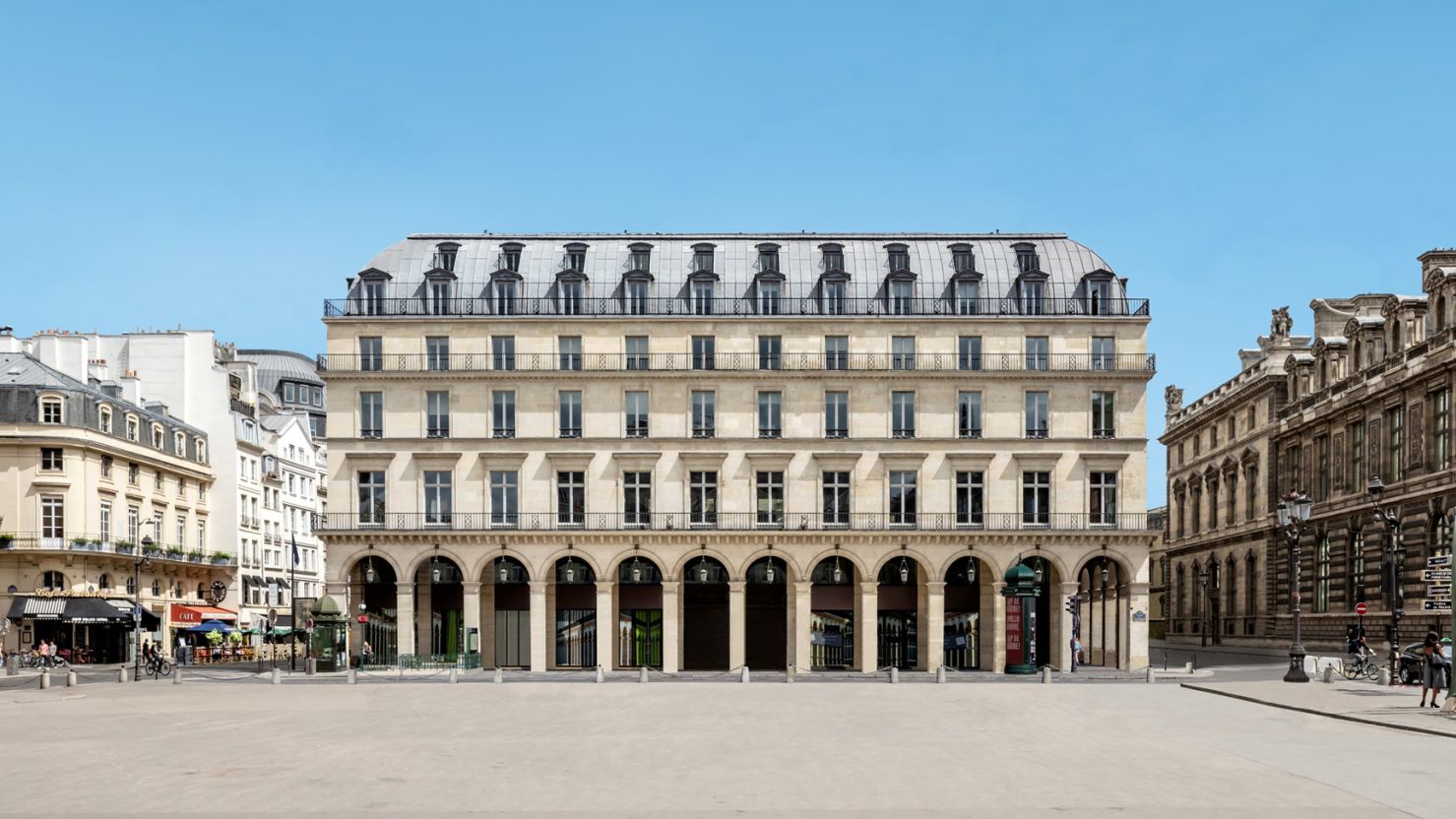Origins and Evolution
The Fondation Cartier was created in 1984 by Alain Dominique Perrin, then President of Cartier International, marking an early entry into corporate art patronage at a time when such initiatives were relatively rare in France.
Initially housed in Jouy-en-Josas, a suburb southwest of Paris, the foundation relocated to Boulevard Raspail in Paris in 1994, its home for three decades.
Four days ago, on the 25th of October 2025, the foundation opened its doors in a new, redesigned space by architect Jean Nouvel directly across from the Louvre Museum: a restored Haussmannian building with adjustable platforms can be set at different heights, allowing for diverse spatial configurations, verticalities, and light modulations across 6,500 square meters of exhibition space. Nouvel's design philosophy perfectly embodies the foundation's ethos: openness, transparency, and a seamless dialogue between art and its environment.

Leadership and Curatorial Vision
Under the leadership of Hervé Chandès, who succeeded Marie-Claude Beaud as Director of
the Fondation Cartier in 1994, the foundation became known for its willingness to take risks, supporting artists who might be overlooked by more traditional institutions and fostering long-term relationships with its artists rather than simply mounting one-off exhibitions.
In 2023, Fondation Cartier appointed Chris Dercon as its new director alongside Hervé Chandès, who remains its artistic director.
Chris Dercon is a renowned museum veteran that began his career as program director of PS1 New York in 1988 and has directed the Tate Modern in London, among other major art institutions.
Landmark Exhibitions
The curatorial team at Fondation Cartier has consistently demonstrated a willingness to explore interdisciplinary connections, and that explains why its exhibition history reads like a who's who of contemporary art, but always with unexpected angles and presentations:
"Être nature" (1998) brought together artists and scientists to explore humanity's relationship with the natural world, featuring Patrick Blanc's vertical garden and commissioned works by other artists.
"Yanomami: The Spirit of the Forest" (2003) marked a significant moment in the foundation's commitment to indigenous cultures, showcasing the art and cosmology of the Yanomami people from the Amazon rainforest alongside work by photographer Claudia Andujar.
"Mathématiques, un dépaysement soudain" (2011) exemplified the foundation's interdisciplinary approach, exploring the aesthetic and conceptual dimensions of mathematics through the work of artists, filmmakers, and mathematicians.
"The Great Animal Orchestra" (2016), created in collaboration with musician and bioacoustics expert Bernie Krause, was an immersive installation exploring the disappearing soundscapes of wild habitats—a powerful meditation on environmental destruction.
"Olga de Amaral: A Landmark Retrospective" (2024-2025), an exploration of a pioneering figure in Fiber Art and a key contributor to the Colombian art scene.
Among the diverse roster of artists supported by the Fondation Cartier, Gustavo Pérez represents the foundation's commitment to Latin American contemporary art. While the foundation has showcased numerous Latin American artists throughout its history—from Mexican photographer Graciela Iturbide to Brazilian artist Beatriz Milhazes—each artist brings unique perspectives that challenge and expand contemporary art discourse.
The foundation has been particularly attentive to artists working at the intersection of traditional practices and contemporary concerns. It has championed self-taught and outsider artists, including the remarkable work of Bodys Isek Kingelez, a Congolese artist who created intricate sculptural models of fantastical cities from paper and cardboard, which gained international recognition through the foundation's support.
Some notable artists in the foundation's constellation include:
Guillermo Kuitca, Ron Mueck, David Lynch (showcased not only as a filmmaker but as a visual artist), Patti Smith (presented as both musician and visual artist) or Takeshi Kitano.
Nomadic Program
Beyond its Paris headquarters, the Fondation Cartier has developed a "nomadic" program, presenting exhibitions internationally and adapting its shows for different cultural contexts. This approach has taken exhibitions to venues across Europe, Asia, and the Americas, expanding the foundation's reach while remaining true to its core mission.
Looking Forward
In an art world increasingly driven by market forces and spectacle, Fondation Cartier has built a significant permanent collection through sustained relationships with artists, and remains committed to experimentation, risk-taking, and meaningful engagement with the pressing questions of our time.
The glass walls of Jean Nouvel's building stand as an apt metaphor for the institution itself—transparent in its mission, open to diverse voices, and creating a space where art, ideas, and audiences can meet in unexpected and transformative ways.
For anyone seeking to understand the possibilities of contemporary art patronage, the Fondation Cartier offers an inspiring model of what can happen when vision, resources, and genuine commitment to artists come together.